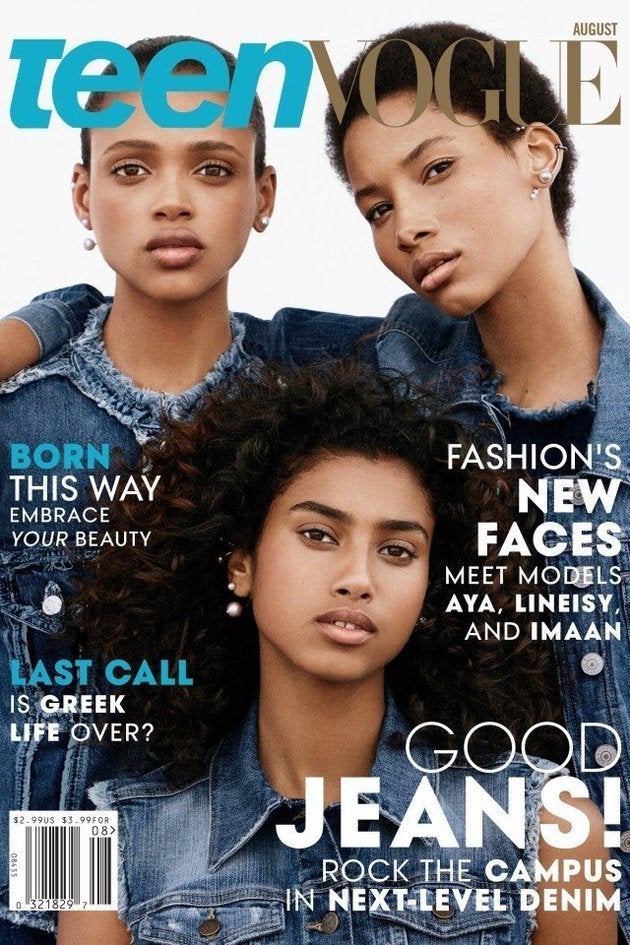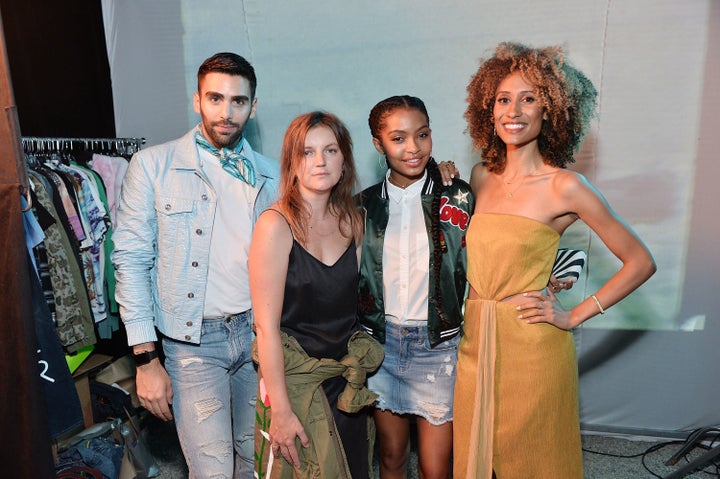Teen Vogue’s staying power in a constantly-dwindling teen magazine market kept it in print for over a decade. Now, as news emerges that it will stop publishing issues of the magazine, it truly feels like the day of the teen magazine is coming to an end.
WWD reported Thursday that, along with slashing “about 80 jobs” and “reducing the frequency of most of its titles,” it will also cease operations on Teen Vogue’s print side. A source confirmed the news to HuffPost, adding that the digital version, run largely by digital editorial director Philip Picardi, will continue.
One of the first signs of collapse was a dip in print readership (the New York Times reported in 2013 that readership was half what it was when the magazine launched).
Rumors that the glossy may fold started back in Nov. 2015, when parent company Conde Nast announced that Vogue would begin handling the magazine from the business side. Those rumors rocketed once again when it was announced in May 2016 that Teen Vogue’s founding editor-in-chief Amy Astley, who was tapped to launch the mag in 2003, departed to head up the team at Architectural Digest.

It was hit yet again with rumors in November 2016, when it was announced that the magazine would scale back to a quarterly schedule.
Interestingly, it was Astley who expressed the challenges of serving a teen audience through print to Adweek in 2012. “This current generation is best served with mobile, digital products and newsstand special issues,” she said. “There’s always room for more creativity and more voices, but it’s easier to do that digitally. It’s incredibly hard and expensive to compete [in print].”
But the tide seemed to turn in 2016, under the leadership of editor-in-chief Elaine Welteroth and Picardi, but it was the digital side, under the leadership of Picardi, that garnered a ton of positive attention, specifically during the 2016 presidential election.
Welteroth has undoubtedly been more visible as the “face” of the brand (she has appeared in a guest spot on “Blackish,” speaks regularly on panels with major media players and regularly chums up with celebrities on Instagram). But Picardi has been busy building up what can only be described as an empire, leading digital at both Teen Vogue and Allure and most recently launching Them, an LGBTQ brand at Conde.

Teen Vogue stood the test of time, even when most of its competitors could not. When YM shut down in 2004, Conde Nast, which purchased its assets, used “its list of subscribers to bolster” Vogue’s younger counterpart, NBC reported at the time.
Two years later, in 2006, both Elle Girl and Teen People saw the same fate. Both ended print circulation, and both maintained a digital presence. Today, ElleGirl.com redirects to the Elle website, and TeenPeople.com redirects to People.
In 2008, CosmoGirl shut down. Seventeen ― which is now the last man standing and had “double the circulation” of Teen Vogue in 2013, according to the New York Times ― absorbed its readership.
Aside from the digital-first habits of teens today, Carolyn Dubi, who in 2008 was the director of media planning agency Initiative, told the New York Times that teens simply weren’t as drawn to teen content anymore. “They’re turning toward books that are not so teen-oriented, so they’ll turn to a Cosmopolitan or a Glamour or a Vogue,” she said.
But in the wake of its end, we can’t help but feel a pang of sadness and nostalgia. Teen Vogue exposed young people to real topics they cared about without rushing them toward adulthood, answering questions about things “like trying to be perfect, sibling rivalries and critical mothers,” Astley told the New York Times in 2013. The publication warned about the dangers of getting high in a way that your cool, more mature older sister would, as opposed to your health teacher. Best of all, it spoke to teens, not at teens. Its features on high school and college style around the country gave readers a sense of camaraderie, as opposed to the “grown up” versions of fashion mags that seemed so far off.
For anyone who grew up on Vogue’s spunky, down-to-earth little sister, the loss of Teen Vogue represents more than just another nail in the print world coffin. Every month that brought a shiny, compact new issue of Teen Vogue was an opportunity to learn about brands and industry insiders to which we may not have otherwise encountered, to recount stories from teens just like us, and to pine over the current teen heartthrob of the moment.
All of it ― whether hard-hitting topics, back-to-school style inspo, celebrity interviews or otherwise ― gave young women a voice, a voice we’ve used, and will continue to use long after the mag publishes its last issue.